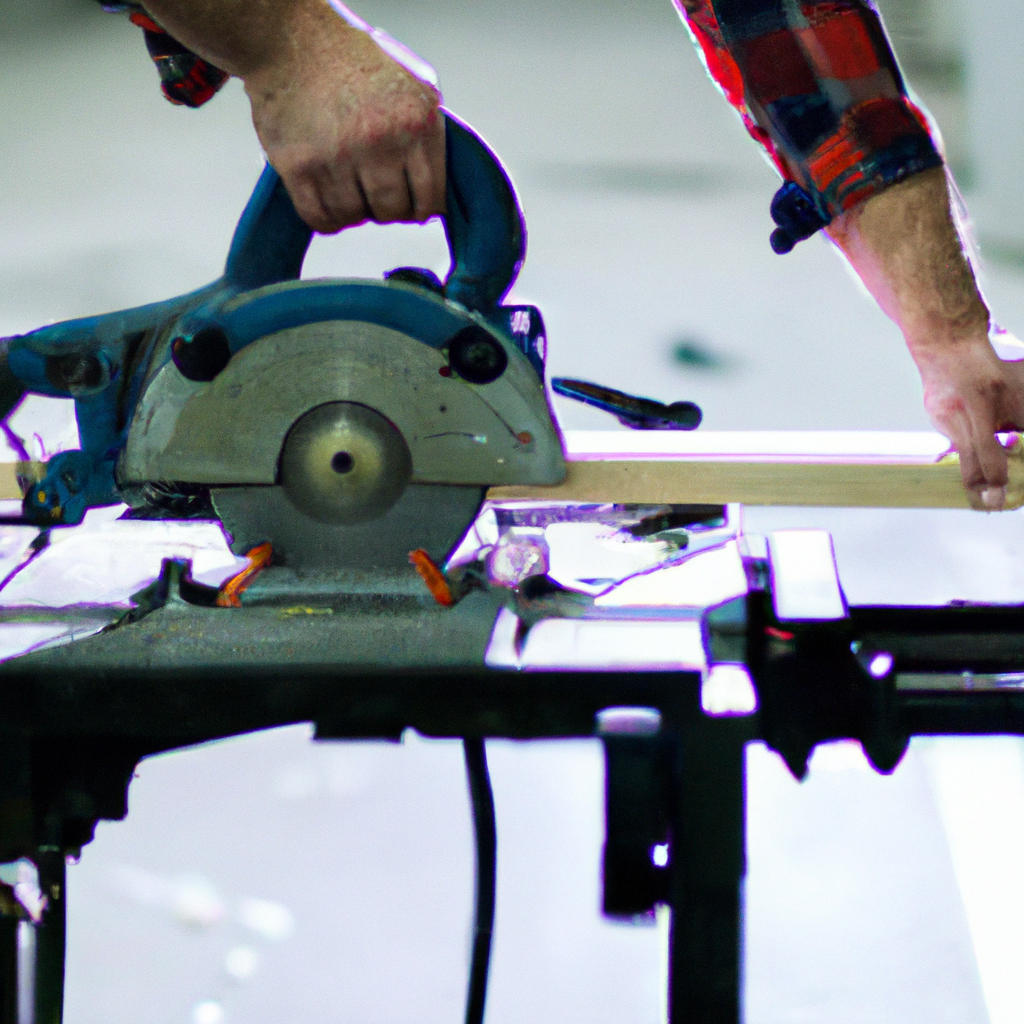Table saws are incredibly versatile and useful tools for woodworkers and DIY enthusiasts alike. However, their sharp blades and powerful motors can also pose a serious safety risk if not handled properly. In this article, we will explore how table saw safety measures work to protect you from potential accidents. From the blade guard and anti-kickback device to the riving knife and push stick, we will uncover the ingenious mechanisms that ensure your safety while operating a table saw. So, let’s dive into the world of table saw safety and discover the crucial features that make woodworking a safe and enjoyable experience.

Table Saw Safety Features
Table saws are powerful tools that can significantly speed up your woodworking projects. However, they also pose potential risks if not used properly. That’s why table saw manufacturers have implemented various safety features to help protect users from accidents and injuries. In this comprehensive article, we will explore and delve into the different safety features that you should be familiar with when using a table saw. By understanding these safety features and how they function, you can significantly reduce the likelihood of accidents and ensure a safer woodworking experience.
Blade Guard
One of the primary safety features found on table saws is the blade guard. The blade guard is a protective cover that encloses the saw blade when it’s not in use. Its purpose is to prevent accidental contact with the sharp blade, reducing the risk of severe injuries.
Design and Purpose
The blade guard is usually made of transparent plastic or polycarbonate material, allowing you to see the cutting operation while providing a physical barrier between your hands and the spinning saw blade. Its design incorporates an opening through which the material being cut can slide while keeping your hands a safe distance away from the blade.
Types of Blade Guards
There are various types of blade guards available, each with its own design and features. Some blade guards are fixed, while others are retractable or removable. Retractable blade guards automatically move up and down as you guide the material through the blade, providing optimal safety during the cutting process. Removable blade guards can be taken off for specific cutting tasks that require more visibility or when using certain specialized accessories.
Installation and Adjustment
Installing and adjusting the blade guard is relatively straightforward and varies depending on the table saw model. Most table saws include an instruction manual that provides step-by-step guidance on how to properly install and adjust the blade guard. It’s crucial to ensure that the blade guard is securely attached and properly aligned with the saw blade to ensure optimal safety.
Proper Usage and Maintenance
To maintain the effectiveness of the blade guard, it’s essential to use it whenever operating the table saw. Always make sure the blade guard is properly positioned before starting any cutting operation. Additionally, regular maintenance, such as cleaning and inspecting the guard for any signs of damage, is crucial to ensure its proper functioning.
Riving Knife
The riving knife is another important safety feature found on modern table saws. It plays a crucial role in preventing kickback, which is a common and potentially dangerous occurrence during table saw operation.
Function and Importance
The primary function of a riving knife is to keep the kerf, or the cut made by the saw blade, open and prevent the material from pinching the blade and causing kickback. Kickback happens when the wood being cut binds against the back of the blade and gets thrust backward, towards the user. This sudden backward movement can cause serious injuries.
Types of Riving Knives
There are different types of riving knives available, including attached riving knives and interchangeable riving knives. Attached riving knives are permanently attached to the table saw and move up and down with the blade. Interchangeable riving knives can be adjusted and switched out for different thicknesses of material or specific cutting techniques.
Installation and Adjustment
Installing and adjusting a riving knife varies depending on the table saw model. Manufacturers provide detailed instructions on how to install and adjust the riving knife properly. Typically, the riving knife aligns with the blade and should be adjusted so that it maintains a close clearance without touching the blade.
Benefits and Limitations
The riving knife offers several benefits, including improved safety and reduction in kickback incidents. Properly installed and adjusted riving knives ensure that the material being cut remains stable, reducing the risk of sudden material movements. However, it’s important to note that riving knives may have limitations on cutting certain angles or using specific dado blades. Always refer to the manufacturer’s instructions and guidelines for proper usage.
Splitter
Definition and Purpose
Types of Splitters
Installation and Adjustment
Effectiveness and Safety Considerations


